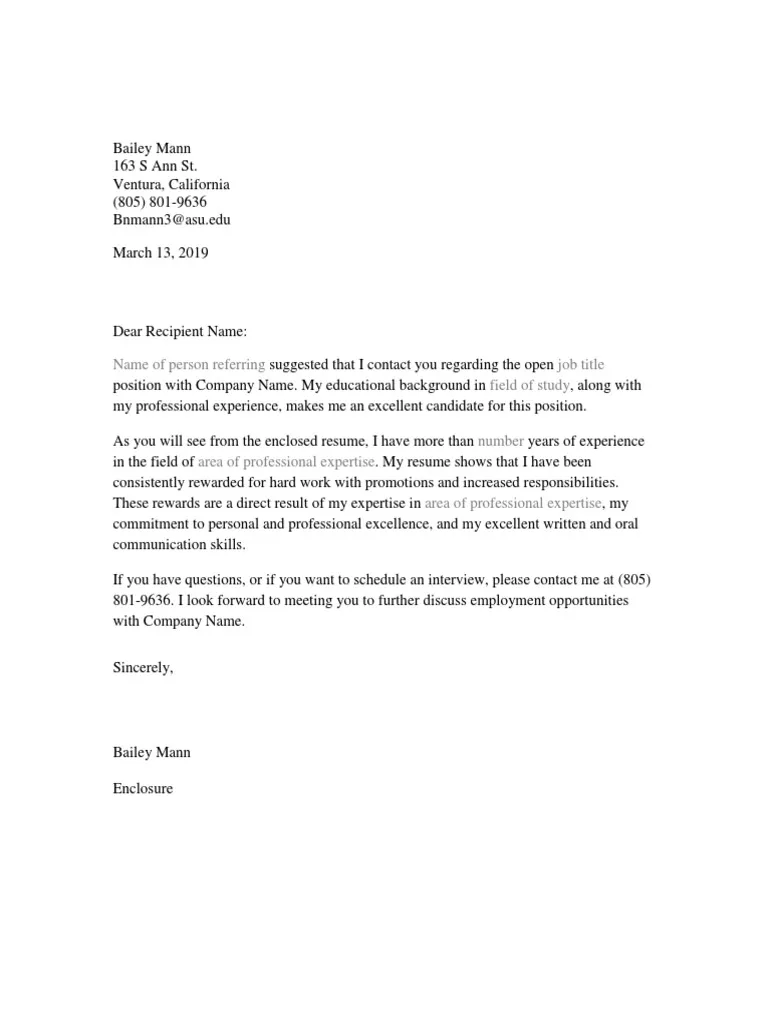Why a Tech Cover Letter Matters
In the competitive world of technology, a cover letter is your first opportunity to make a strong impression. It’s a chance to showcase your personality, enthusiasm, and how your skills align with the specific role and the company’s needs. Unlike a resume, which is a summary of your experience, a cover letter allows you to tell a story, connecting your past experiences to the future opportunity. It’s an invaluable tool for demonstrating your genuine interest in the company and the position, setting you apart from other applicants who might be relying solely on their resumes. A well-crafted cover letter can significantly increase your chances of landing an interview by providing context, personality, and passion beyond the facts listed in your resume. This is especially crucial in the tech industry, where cultural fit and communication skills are just as important as technical expertise.
Understanding the Tech Company Culture
Every tech company has its own unique culture, and your cover letter should reflect your understanding and appreciation of it. Before writing, research the company’s mission, values, and the way they portray themselves online. Do they emphasize innovation, collaboration, or customer-centricity? Are they known for a fast-paced environment or a more relaxed, creative atmosphere? By demonstrating that you understand their culture, you show that you’re not just looking for any job, but specifically this one. Browse their website, social media profiles, and recent news articles. Look for examples of their core values in action and tailor your cover letter to reflect those values. If the company values teamwork, highlight your collaborative experiences. If they emphasize innovation, talk about your ideas for improving processes or products. This targeted approach shows that you’ve done your homework and are genuinely interested in contributing to their team.
Researching the Company and Role
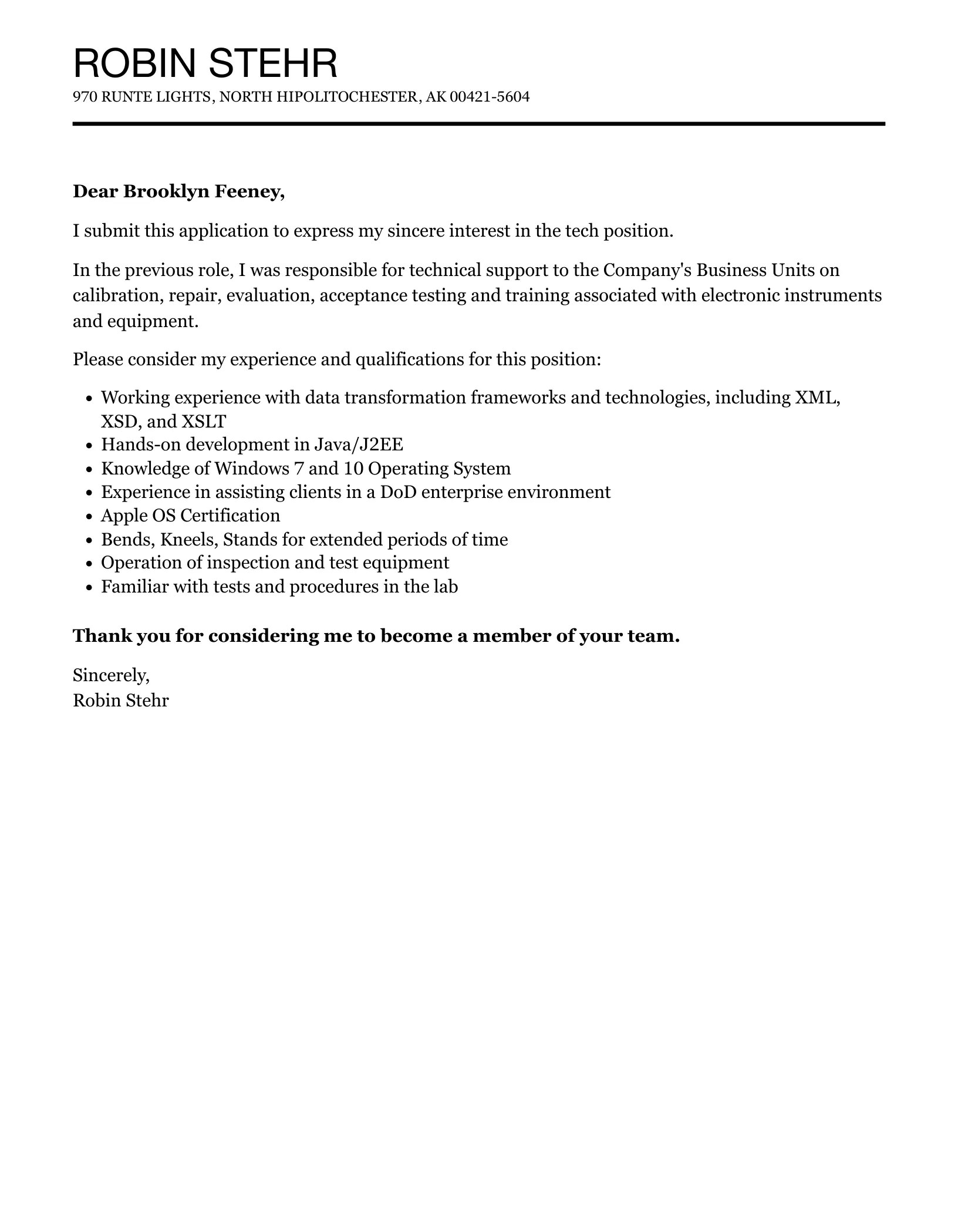
Thorough research is essential for crafting a compelling cover letter. Start by reviewing the job description carefully, paying close attention to the required skills and qualifications. Identify the keywords used to describe the role and incorporate them naturally into your letter. This will help your application get past automated screening systems (ATS). Next, investigate the company itself. Visit their website, read their blog, and check their social media accounts to learn about their products, services, and recent news. Understand their target market, competitors, and any recent company initiatives. The more you know, the better you can tailor your cover letter to demonstrate your understanding and interest. Researching the hiring manager or team can also provide valuable insights, allowing you to address your letter directly to a specific individual. Tailoring your letter to the specific role and company ensures that it resonates with the hiring team, increasing your chances of getting noticed and securing an interview.
Highlighting Your Technical Skills
Your cover letter should explicitly highlight the technical skills most relevant to the job description. Don’t just list them; provide context and examples of how you’ve applied these skills in the past. Instead of simply stating “Proficient in Python,” describe a project where you used Python to solve a specific problem or improve a process. This demonstrates that you not only possess the skills but can also apply them effectively. Quantify your achievements whenever possible. Instead of saying “Improved website performance,” specify by how much (e.g., “Improved website loading speed by 30%”). Use the same keywords found in the job description to ensure your qualifications align with the company’s needs. By connecting your skills to tangible results, you provide compelling evidence of your capabilities and make a strong case for why you’re the ideal candidate for the role. Remember to tailor this section to each application, focusing on the skills that are most relevant to that specific position.
Showcasing Your Projects and Accomplishments
Beyond listing your skills, use your cover letter to showcase your projects and accomplishments. This is your chance to demonstrate how you’ve applied your technical expertise in real-world scenarios. Describe significant projects, focusing on your role, the challenges you faced, and the outcomes you achieved. Instead of vague descriptions, provide specific details. Did you lead a team? Did you overcome a technical hurdle? Did you deliver results within a specific timeframe? Quantify your accomplishments whenever possible. For example, if you improved a system’s efficiency, specify the percentage increase or the time saved. If you developed a new feature, explain its impact on user engagement or revenue. This detailed approach allows the hiring manager to see your capabilities and understand the value you can bring to their team. Include links to your portfolio, GitHub profile, or any online projects to provide concrete evidence of your work.
Quantifying Your Achievements
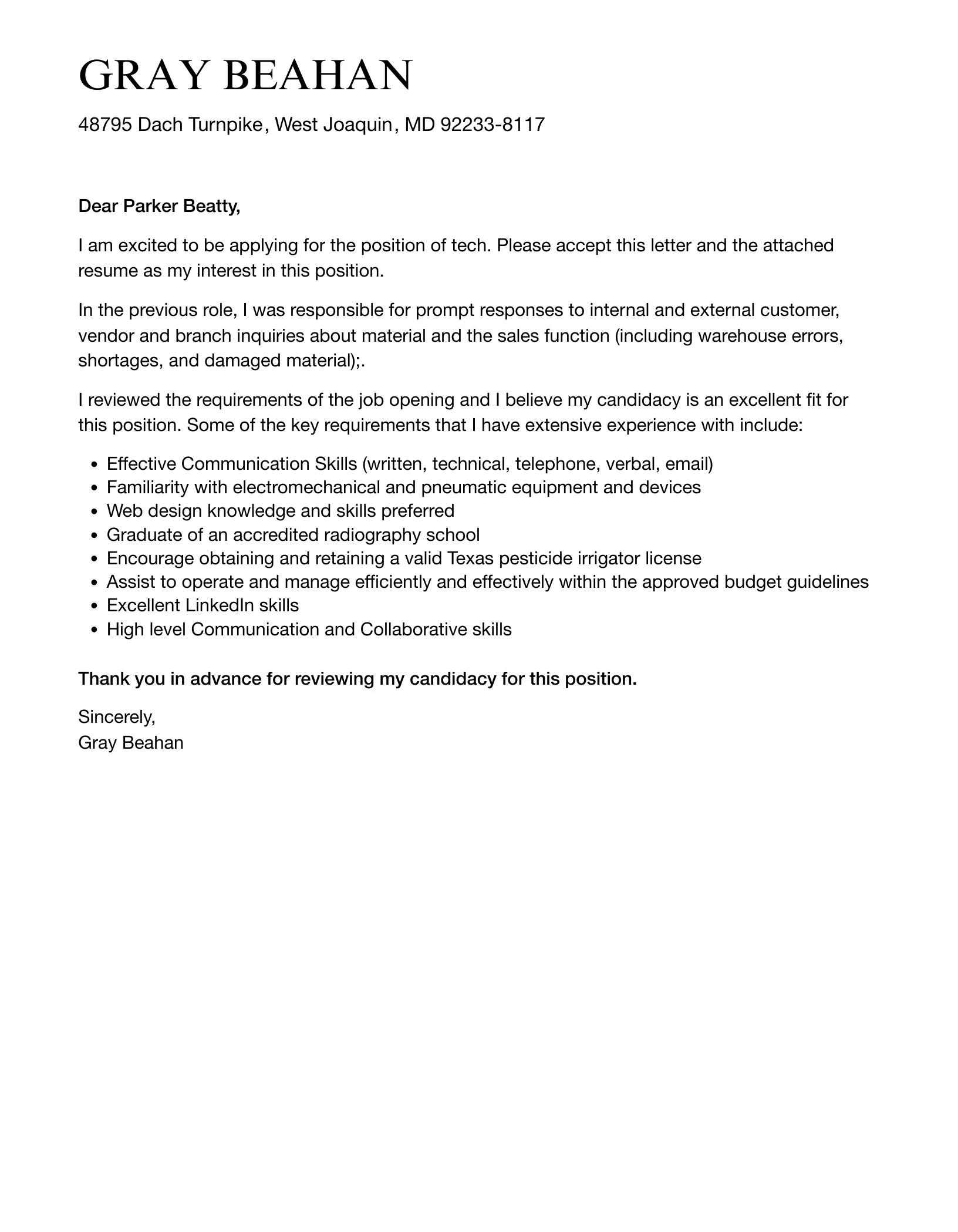
Quantifying your achievements is crucial for demonstrating the impact of your work. Whenever possible, use numbers, percentages, and specific metrics to illustrate your accomplishments. For example, instead of saying you “increased sales,” specify by how much (e.g., “Increased sales by 15% within six months”). Did you reduce costs? If so, by how much? Did you improve efficiency? Specify the percentage of improvement or the time saved. Quantifying your achievements provides concrete evidence of your value and allows the hiring manager to easily assess the results you’ve delivered. Use action verbs to describe your accomplishments, and then follow them up with quantifiable results. For instance, “Developed a new algorithm that reduced processing time by 20%” is much more impactful than “Worked on algorithm improvement.” By quantifying your achievements, you not only showcase your skills but also provide compelling evidence of your ability to deliver tangible results.
Tailoring Your Cover Letter
Generic cover letters are easily identified and often dismissed. To stand out, you must tailor each cover letter to the specific role and company. This means more than just changing the company name; it means researching the company, understanding the role’s requirements, and aligning your skills and experiences accordingly. Read the job description carefully and identify the key skills and qualifications the company is seeking. Then, review your resume and select the experiences that best demonstrate those skills. Customize your cover letter to highlight those experiences, providing specific examples of how you’ve used those skills in the past. Refer to the company’s mission, values, and recent projects, demonstrating that you understand their business and are genuinely interested in contributing to their success. Personalize your letter by addressing it to the hiring manager, if possible, and mentioning specific aspects of the company or role that excite you. This level of personalization shows the hiring team that you have invested time and effort in applying for their specific opportunity, making you a more attractive candidate.
Key Elements of a Tech Cover Letter
A strong tech cover letter includes several key elements that work together to create a compelling narrative. Start with a captivating opening that grabs the reader’s attention, showing why you are a great fit. Immediately explain why you’re interested in the specific role and company. In the body of the letter, highlight your relevant technical skills and provide concrete examples of your accomplishments. Showcase your projects and quantify your results, using metrics to demonstrate your impact. Demonstrate your understanding of the company’s culture and values. End with a strong closing that reiterates your enthusiasm and includes a clear call to action. Make sure to proofread your letter carefully for any errors. Formatting is also important, so ensure your cover letter is well-organized, easy to read, and professional in tone. Use action verbs, tailor your letter to the specific job description, and include your contact information.
Crafting a Compelling Opening
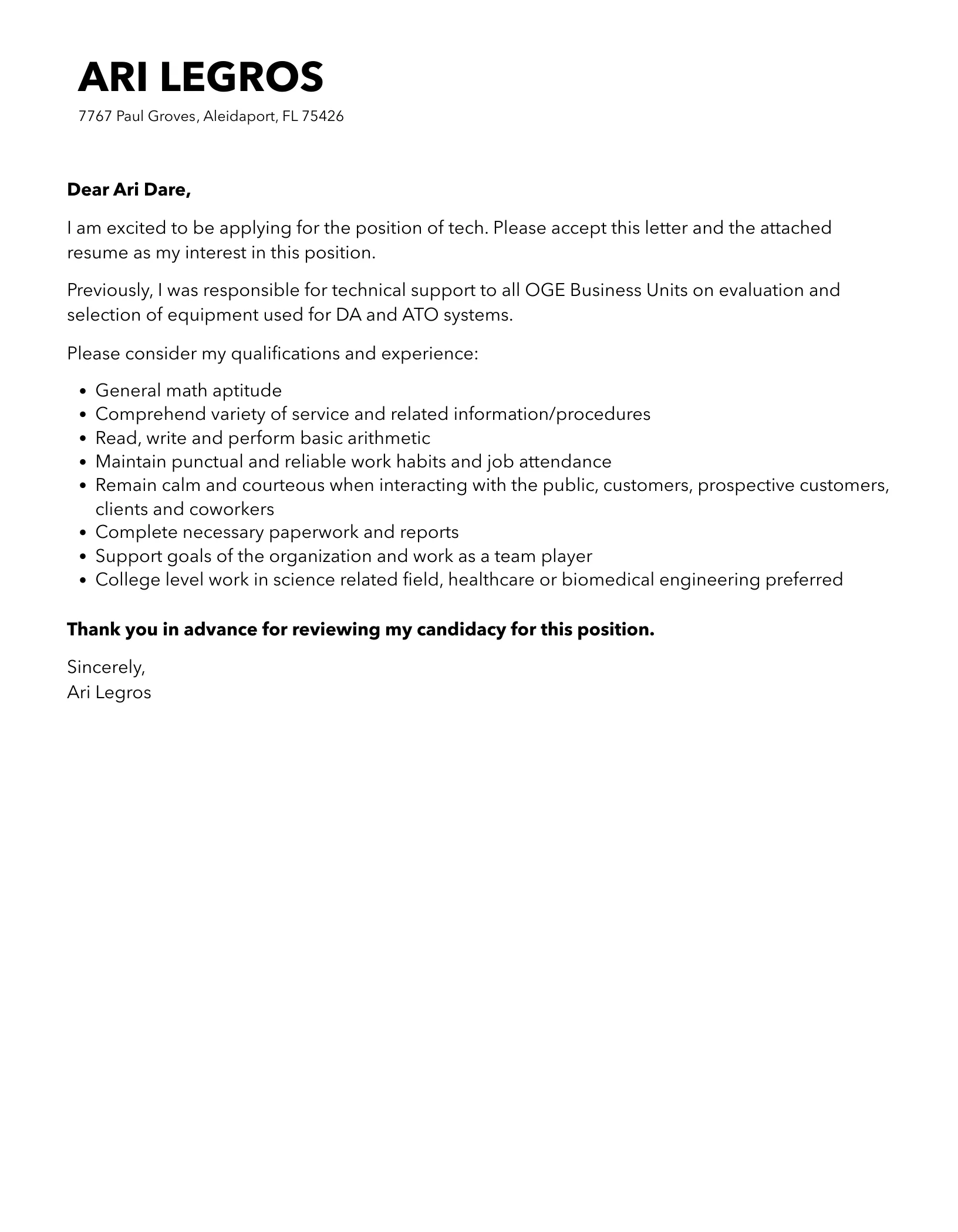
The opening of your cover letter is crucial; it’s your chance to make a strong first impression and capture the reader’s attention. Avoid generic openings like “I am writing to express my interest…” Instead, start with a brief, compelling statement that immediately connects your skills and experience to the role and the company’s needs. Consider mentioning a specific achievement or project that highlights your relevant expertise. Alternatively, reference a recent company initiative or news item that resonates with your interests. Express your enthusiasm for the opportunity and explain why you are a great fit. For example, you could start with something like, “As a highly motivated software engineer with a passion for [Company’s product/service], I was thrilled to see the opening for a [Job Title] position.” Keep the opening concise and focused. The goal is to pique the reader’s interest and make them want to read more.
Highlighting Relevant Experience
Your cover letter is the ideal place to elaborate on your relevant experience. Go beyond simply listing your past roles and responsibilities; provide specific examples that showcase your skills and achievements. Use the STAR method (Situation, Task, Action, Result) to structure your examples. Briefly describe the situation, explain the task you were assigned, detail the actions you took, and then highlight the results you achieved. Focus on experiences that align with the job description. If the role requires experience with a specific programming language or technology, provide examples of how you have used it successfully in the past. Quantify your accomplishments whenever possible. Did you improve efficiency? If so, by how much? Did you solve a challenging problem? Explain how and what was the result. By providing detailed examples and quantifiable results, you demonstrate your ability to apply your skills and deliver value to the company. Highlight experience that reflects leadership, teamwork, or problem-solving skills, as these are highly valued in the tech industry.
Demonstrating Passion for Technology
In the tech industry, passion is often just as important as technical expertise. Showcasing your enthusiasm for technology can set you apart from other candidates. Mention your interest in the company’s products, services, or mission. Describe how you stay current with industry trends and technologies, whether through personal projects, online courses, or attending industry events. Talk about any personal projects or side hustles that demonstrate your dedication to continuous learning. Share what excites you about technology and what motivates you to excel in your field. This could include mentioning a specific technology you’re passionate about, or an area of tech innovation you’re following. Show that you’re not just looking for a job but are genuinely excited about working in the tech field and contributing to the company’s goals. Passion is contagious, and the hiring team will appreciate your genuine enthusiasm for the work.
Showcasing Your Problem-Solving Skills
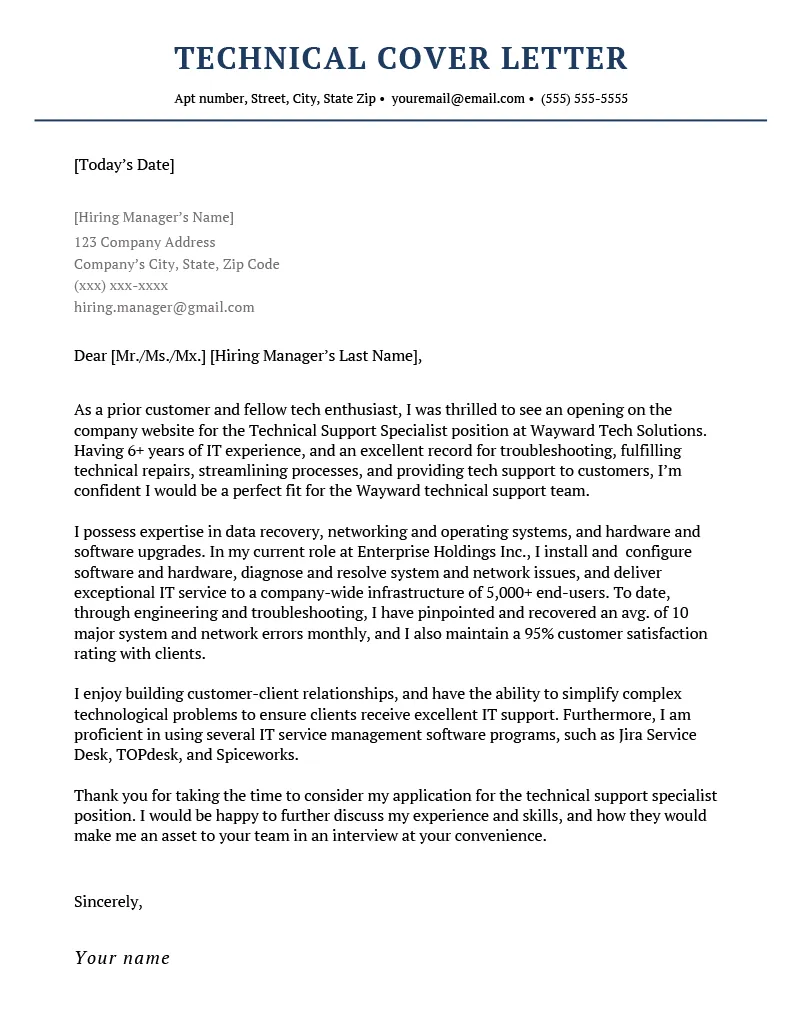
Tech companies highly value problem-solving skills. Your cover letter is an excellent place to showcase your ability to analyze complex situations, identify solutions, and implement them effectively. Provide specific examples of problems you have solved in the past. Describe the challenges you faced, the steps you took to address them, and the results you achieved. Quantify your successes whenever possible. Did you improve efficiency? Did you reduce errors? Did you save the company money? Using the STAR method can be very effective here. Illustrate your analytical thinking and describe how you approached the problem, what tools and methods you used, and what alternative solutions you considered. Demonstrate your ability to think critically, adapt to new situations, and find creative solutions. Mention any relevant experience in debugging, troubleshooting, or optimizing systems. Highlighting your problem-solving abilities will show the hiring team that you can handle the challenges of the role and contribute to their success.
Formatting Your Cover Letter for Success
The formatting of your cover letter is just as important as the content. A well-formatted letter is easy to read and makes a positive impression on the hiring manager. Use a professional font like Arial, Calibri, or Times New Roman. Choose a font size between 10 and 12 points to ensure readability. Keep the formatting consistent throughout the document. Use clear headings and subheadings to organize your thoughts and make the letter easy to scan. Use bullet points or numbered lists to highlight key information, such as skills and accomplishments. Keep your paragraphs concise, ideally no more than four or five sentences each. Use appropriate spacing between paragraphs to avoid a cluttered appearance. Ensure the letter is free of grammatical errors and typos by proofreading carefully. A well-formatted cover letter demonstrates attention to detail and professionalism, which are essential qualities in the tech industry.
Tips for a Professional Tone
Maintaining a professional tone throughout your cover letter is essential. Avoid using slang, jargon, or overly casual language. Keep your tone respectful and confident. Use clear and concise language, avoiding overly complex sentences or technical terms that the hiring manager might not understand. Proofread your letter carefully to catch any grammatical errors or typos. Use a formal salutation such as “Dear [Hiring Manager Name]” or “Dear [Hiring Team].” If you don’t know the hiring manager’s name, use “Dear Hiring Manager.” End your letter with a professional closing such as “Sincerely” or “Best regards.” Show enthusiasm, but avoid over-the-top or exaggerated statements. Focus on your qualifications and how you can contribute to the company’s success. Ensure your tone matches the company’s culture; if it’s a formal environment, keep your tone formal, and if it’s more casual, you can adjust your tone accordingly.
Using Action Verbs Effectively
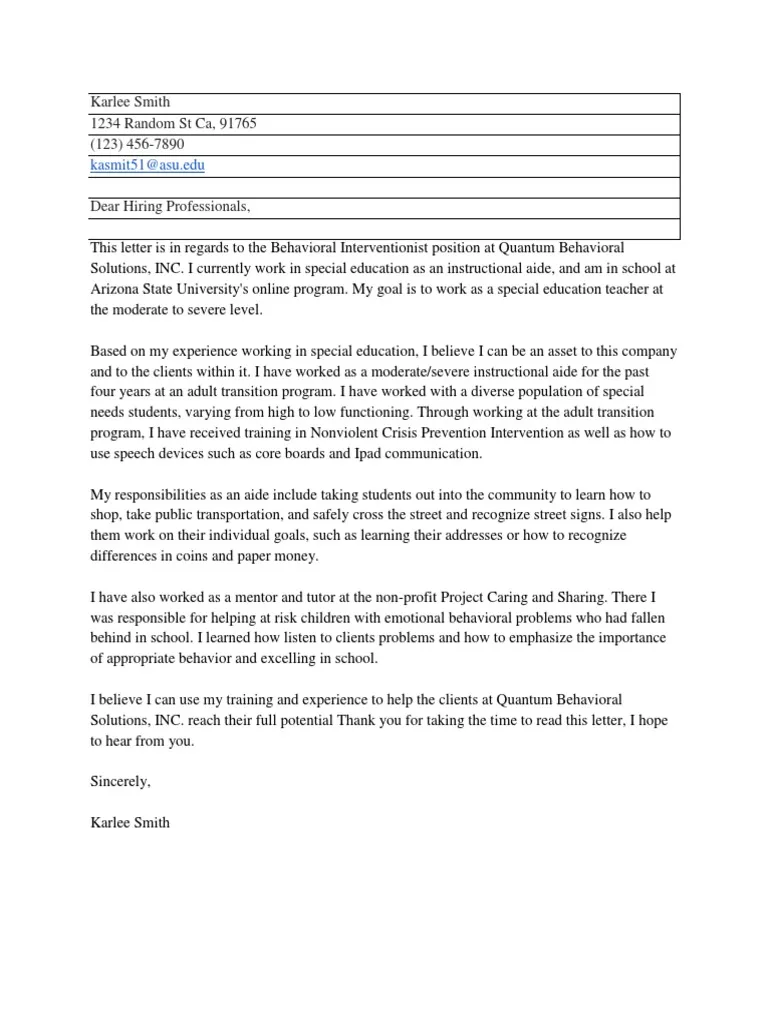
Using strong action verbs is an effective way to make your cover letter more dynamic and impactful. Action verbs help you describe your accomplishments and responsibilities in a clear and concise way. Begin each sentence with a strong verb to immediately capture the reader’s attention. For example, instead of saying, “Responsible for managing projects,” use a verb like “Managed projects, delivering them on time and under budget.” Use a variety of action verbs to avoid sounding repetitive. Some examples include: Developed, implemented, designed, created, led, managed, improved, increased, reduced, optimized, collaborated, and coordinated. Use verbs that accurately reflect your accomplishments. This will help demonstrate your skills and illustrate your contributions, making your cover letter more engaging and memorable.
Proofreading and Editing Your Cover Letter
Proofreading and editing are critical steps in ensuring your cover letter is polished and professional. Typos and grammatical errors can undermine your credibility and detract from your qualifications. Read your cover letter carefully, looking for errors in grammar, spelling, and punctuation. Use a spell checker and grammar checker, but don’t rely solely on these tools. Have a friend, family member, or career advisor review your cover letter. Ask them to provide feedback on clarity, tone, and overall impact. Read your letter aloud to catch any awkward phrasing or run-on sentences. Check that you have used the correct company name, job title, and hiring manager’s name. Ensure that the formatting is consistent and professional. Proofreading and editing demonstrate attention to detail and show the hiring team that you care about the quality of your work. Investing time in these final steps can significantly increase your chances of getting noticed and securing an interview.
Common Mistakes to Avoid
There are several common mistakes that can undermine your cover letter. Avoid a generic, one-size-fits-all approach; tailor each cover letter to the specific role and company. Don’t focus only on listing your responsibilities; provide specific examples and quantify your achievements. Don’t use jargon or overly technical language that the hiring manager may not understand. Avoid typos and grammatical errors; proofread carefully. Never lie or exaggerate your skills or experience. Avoid being overly casual or informal in your tone. Don’t make the cover letter too long; keep it concise and focused. Don’t simply repeat the information from your resume; provide additional context and insights. Refrain from including negative information about previous employers or colleagues. Don’t forget to include a strong closing that reiterates your enthusiasm and includes a call to action. By avoiding these common mistakes, you can significantly improve the effectiveness of your cover letter and increase your chances of securing an interview.
Generic Cover Letters
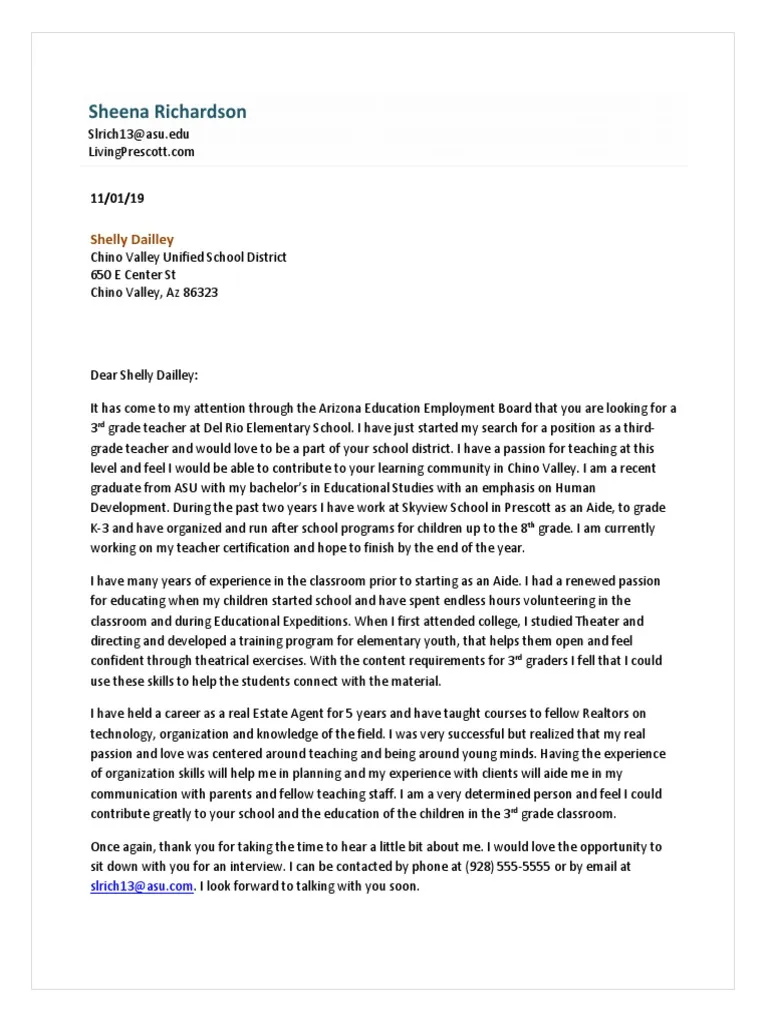
One of the biggest mistakes is submitting a generic cover letter. These letters are often mass-produced and fail to connect with the specific job or company. They typically use vague language, fail to highlight relevant skills, and lack any personalization. Such letters demonstrate a lack of effort and genuine interest, making it less likely that your application will be considered. A generic cover letter might start with a standard opening and then list generic skills without providing any specific examples or tailoring to the job requirements. The letter will often fail to mention the company’s values, culture, or any specific aspects of the role that excite the applicant. To avoid this, always tailor your cover letter to each job application. Research the company, understand the role, and demonstrate how your unique skills and experiences align with their needs. This personalized approach shows the hiring team that you are genuinely interested in the opportunity.
Focusing on the Wrong Skills
Another common mistake is focusing on the wrong skills in your cover letter. You might highlight skills that are irrelevant to the job description or emphasize skills that are not as critical to the role. The key is to carefully review the job description and identify the key skills and qualifications the company is seeking. Prioritize these skills in your cover letter, providing specific examples of how you have used them in the past. Avoid focusing on skills that are not mentioned in the job description or are less relevant to the role. While it’s important to showcase your overall abilities, tailoring your letter to the specific needs of the position demonstrates that you understand what the company is looking for and that you are a good fit. Review your resume and select the experiences that best demonstrate those skills. Customize your cover letter to highlight those experiences, providing specific examples of how you’ve used those skills in the past.
Ignoring the Company’s Values
Ignoring the company’s values is a significant oversight that can undermine your application. Tech companies often place a high value on cultural fit, and demonstrating that you align with their core values can significantly increase your chances of getting hired. Research the company’s mission statement, values, and culture. Browse their website, social media profiles, and recent news articles to understand their priorities and how they operate. Weave these values into your cover letter. Show that you understand their goals and how you can contribute to their success. For example, if the company values teamwork, provide examples of your collaborative experiences. If they emphasize innovation, describe your ideas for improving processes or products. Tailor your letter to reflect the company’s priorities, showing that you’re not just looking for any job, but specifically this one. This targeted approach demonstrates your genuine interest and shows that you have done your homework, making you a more appealing candidate.
The Power of a Strong Closing
The closing of your cover letter is your final opportunity to leave a lasting impression. Make sure your closing is strong, confident, and memorable. Reiterate your interest in the role and express your enthusiasm for the opportunity. Reiterate your enthusiasm for the opportunity and remind the reader of the value you bring to the table. Clearly state your intention to follow up, and include a call to action. For example, you could say, “I am eager to learn more about this opportunity and discuss how my skills and experience can contribute to [Company’s] success. I will follow up with you next week to see if there is a good time to connect.” Include your contact information, so it is easy for the hiring manager to reach you. A strong closing demonstrates professionalism and leaves the hiring team with a positive impression of you as a candidate. Proofread the entire letter one last time to ensure accuracy and professionalism before you submit your application.
Expressing Your Enthusiasm
Expressing genuine enthusiasm is essential in a tech cover letter. Hiring managers want to see that you’re excited about the opportunity and the company. Avoid generic statements and instead show how your specific skills and experiences align with the role. Mention any specific technologies, projects, or aspects of the company’s work that resonate with you. Express why you are drawn to the specific company and its mission, showing that you’ve done your research and are genuinely interested in contributing to their success. Conveying your enthusiasm sets you apart from candidates who may seem indifferent. Let your passion shine through! Use vivid language and show your genuine interest. Your excitement about the opportunity will leave a positive impression on the hiring team and increase your chances of getting an interview.
Providing Contact Information
Always include your contact information in your cover letter. Make it easy for the hiring manager to reach you. Include your phone number, email address, and a link to your professional online profile. Make sure your contact information is current and accurate. Place your contact information at the top of your cover letter or at the end, depending on your preferred style. Ensure the information is clearly visible and easy to read. This simple step makes it easy for the hiring manager to connect with you, which is crucial if they are impressed with your application. Make sure your email address is professional; avoid using a casual or unprofessional email address. Providing complete and correct contact information shows attention to detail and professionalism, which can improve your chances of getting an interview.
Following Up on Your Application
Following up on your application can show your enthusiasm and initiative. A well-timed follow-up can remind the hiring manager of your application and demonstrate your continued interest in the role. Wait a reasonable amount of time (typically one to two weeks) after submitting your application before following up. Send a brief email to the hiring manager or the contact person listed in the job description. Reiterate your interest in the position and mention something specific from your cover letter or the job description. Keep the email concise and professional. If you haven’t heard back after a reasonable period, it’s acceptable to send a follow-up email. Respect the company’s process and avoid being too persistent. Following up effectively demonstrates your continued interest and initiative, and can increase your chances of getting noticed in a competitive job market.
